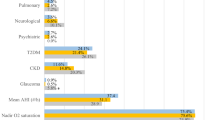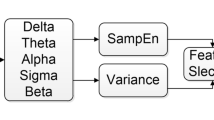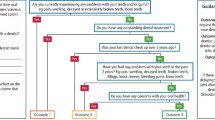Abstract
Study design: Case studies of sleep apnoea occurring in two patients with paraplegia.
Objective: To raise awareness of sleep apnoea in paraplegia.
Setting: Belfast, Northern Ireland.
Case report: We report two patients with paraplegia, one who was having apparent episodes of loss of consciousness and the other daytime somnolence, who were found to have sleep apnoea. The first patient had been medically investigated extensively and a diagnosis of epilepsy was being considered. A joint consultation with the respective partners in each case revealed periods of night-time apnoea and led to sleep study investigations.
Conclusion: Sleep apnoea is a treatable condition that can occur in patients with paraplegia who are not necessarily obese. Once diagnosed, resolution of symptoms can be rapid and can result in improved quality of life for patients.
Similar content being viewed by others
Log in or create a free account to read this content
Gain free access to this article, as well as selected content from this journal and more on nature.com
or
References
Cahan C et al. Arterial oxygen saturation over time and sleep studies in quadraplegic patients. Paraplegia 1993; 31: 172–179.
Short DJ, Stradling JR, Williams SJ . Prevalence of sleep apnoea in patients over 40 years of age with spinal cord lesions. J Neurol Neurosurg Psych 1992; 55: 1032–1036.
Flavell H et al. Hypoxia episodes during sleep in high tetraplegia. Arch Phys Med Rehabil 1992; 73: 623–627.
Newman AB et al. Relation of sleep-disordered breathing to cardiovascular risk factors: the Sleep Heart Health Study. Am J Epidemiol 2001; 154: 50–59.
Stradling JR . Sleep-related disorders of breathing. In: Ledingham and Warrel (eds). Concise Oxford Textbook of Medicine, Chapter 4.43. Oxford University Press: Oxford, 2000.
Stradling JR . Practical approach to sleep disordered breathing. In: Farthing M (ed). Horizons in Medicine, Blackwell Scientific Publications: Oxford, 1997.
Flemmons WW, McNicholas WT . Clinical prediction of the sleep apnoea syndrome. Sleep Med Rev 1997; 1: 19–32.
Sullivan CE, Issa FG, Berthon-Jones M, Eves L . Reversal of obstructive sleep apnoea by continuous positive airway pressure applied through the nares. Lancet 1981; 1: 862–865.
McEvoy RD et al. Sleep apnoea in patients with quadriplegia. Thorax 1995; 50: 613–619.
Burns SP, Kapur V, Yin KS, Buhrer R . Factors associated with sleep apnea in men with spinal cord injury: a population-based case–control study. Spinal Cord 2001; 39: 15–22.
Cartwright R, Ristanovic R, Diaz F, Calderelli D, Adler G . A comparative study of treatments for positional sleep apnoea. Sleep 1991; 14: 546–552.
Flemmons WW, Whitelaw WA, Brant R, Remmers JE . Likelihood ratios for a sleep apnoea clinical prediction rule. Am J Resp Crit Care Med 1994; 150: 1279–1285.
Author information
Authors and Affiliations
Rights and permissions
About this article
Cite this article
Graham, L., Maguire, S. & Gleadhill, I. Two case study reports of sleep apnoea in patients with paraplegia. Spinal Cord 42, 603–605 (2004). https://doi.org/10.1038/sj.sc.3101609
Published:
Issue date:
DOI: https://doi.org/10.1038/sj.sc.3101609



